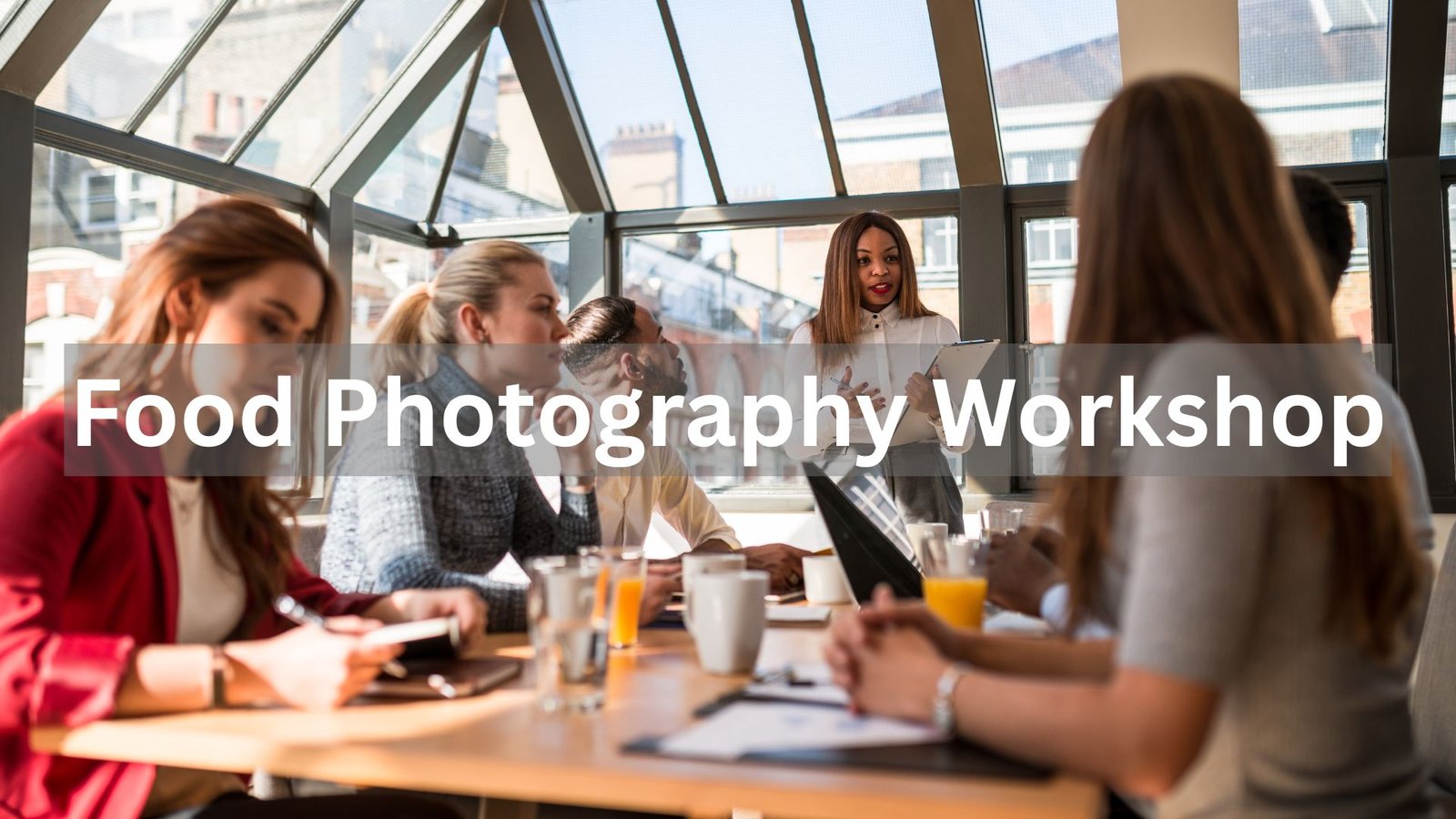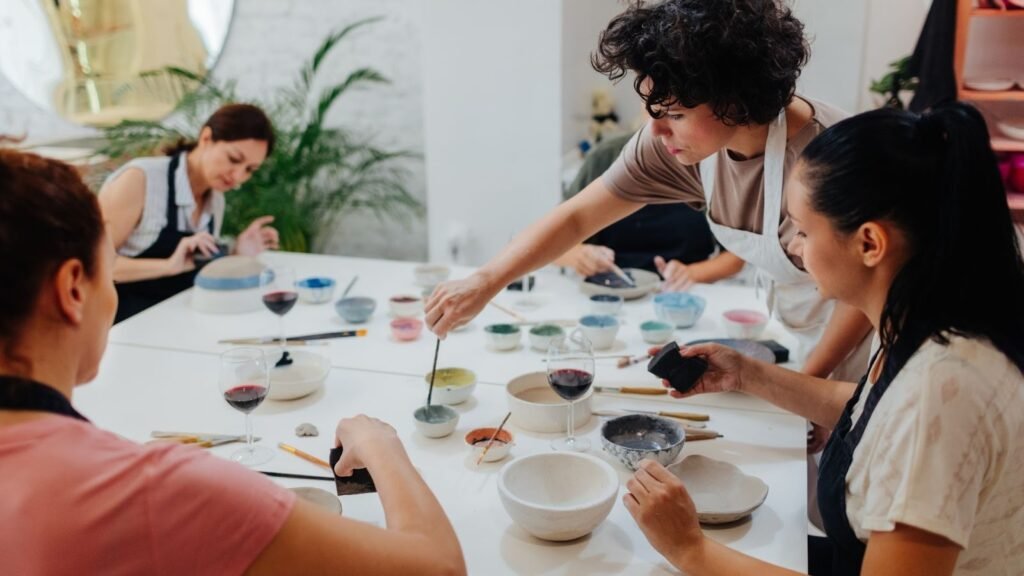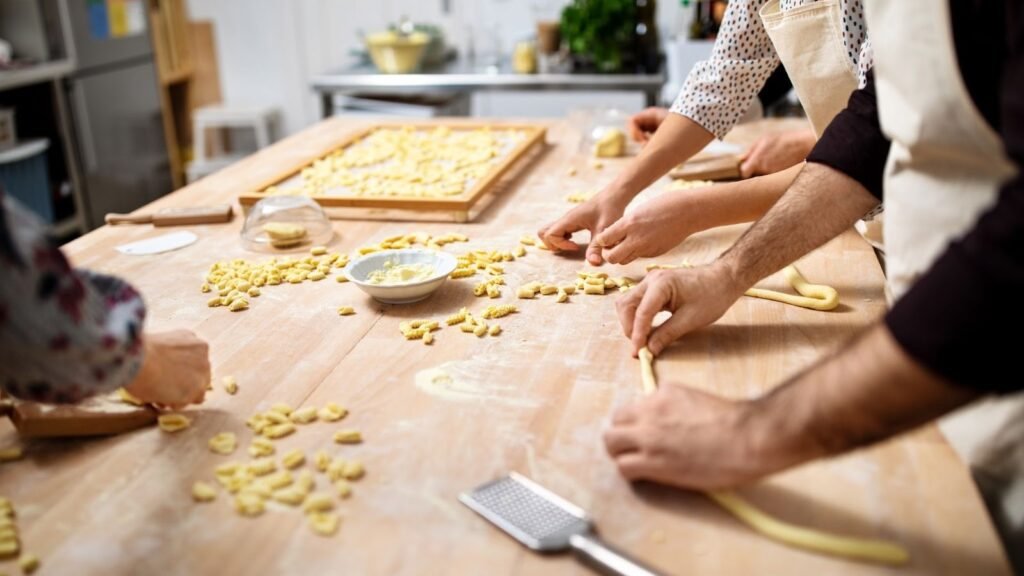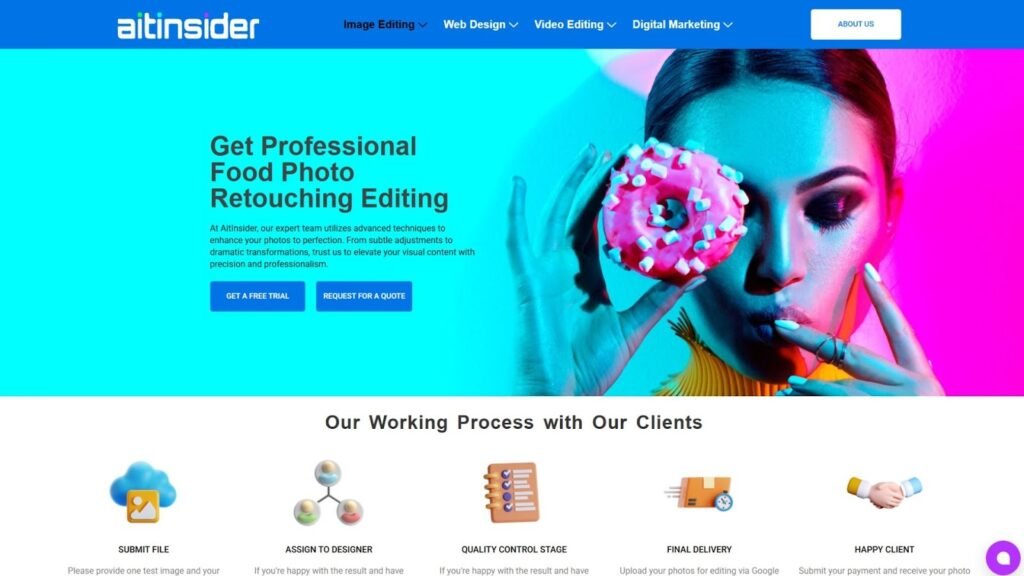
Choosing the Right Food Photography Workshop in 2025: Trends & Tips
Food photography has come a long way from simple snapshots of plates to becoming an art form that blends creativity, storytelling, and technical mastery. In 2025, the demand for stunning food visuals has never been higher. From Instagram influencers to restaurant brands, everyone wants their food to look irresistible. If you’re dreaming of capturing mouth-watering dishes that pop off the screen, joining a Food Photography Workshop can be one of the smartest investments you’ll make this year. But with so many workshops out there—online and in-person—it’s easy to feel overwhelmed. This guide will walk you through how to choose the right Food Photography Workshop, what trends are shaping the field in 2025, and what to expect once you sign up.
Why a Food Photography Workshop Matters in 2025
Let’s start with the big question: why invest time and money in a Food Photography Workshop when there are endless YouTube tutorials and free online resources? The simple answer is structure and feedback. A workshop gives you access to expert photographers who guide you step-by-step, correcting your angles, lighting, and styling in real time.
In 2025, food photography isn’t just about knowing how to use a camera—it’s about understanding visual storytelling. People eat with their eyes first, and brands know this. Whether you’re shooting for social media, a cookbook, or a restaurant’s website, your photos must evoke emotion and appetite. A professional workshop offers that immersive experience—where you learn to set up scenes, use natural and artificial light effectively, and create compositions that tell a delicious story.
Another key reason to join a Food Photography Workshop is networking. You’ll meet like-minded creators, food stylists, and even marketing professionals. These connections can open doors to collaborations and paid gigs in the long run. Workshops also push you to practice under pressure, which helps sharpen your creative instincts and build confidence behind the camera.

Types of Food Photography Workshops You’ll Find
Not all workshops are built the same. In 2025, you’ll notice three main types of Food Photography Workshops—in-person, virtual, and hybrid. Each offers a unique experience depending on your goals and learning style.
In-person workshops remain the most immersive. These are usually hosted in professional studios or beautiful kitchen spaces where you can experiment with props, natural lighting, and live food styling. The hands-on guidance from instructors can make a big difference, especially for beginners who need immediate feedback.
Virtual workshops, on the other hand, have become incredibly popular since 2020. Thanks to better video conferencing tools and live demonstrations, you can now join top-tier photographers from anywhere in the world. Many online workshops even send you pre-recorded lessons along with live critique sessions—perfect if you’re managing a busy schedule.
Lastly, hybrid workshops combine the best of both worlds. You might start online to learn theory and camera basics, then attend an in-person session to practice your skills. This format has gained popularity because it’s flexible yet immersive, giving participants more control over their learning pace.
When choosing between these, think about your current skill level and available time. If you’re brand new to photography, an in-person or hybrid format might help you learn faster. If you’re already comfortable with the basics and just want to refine your composition or lighting style, a virtual Food Photography Workshop might be the perfect fit.
Trends Shaping Food Photography Workshops in 2025
Like any creative field, food photography evolves fast—and so do the workshops that teach it. In 2025, a few major trends are influencing how instructors teach and how students learn.
1. Smartphone Food Photography:
The line between professional cameras and high-end smartphones is blurring. Many Food Photography Workshops now include modules specifically for mobile photography. The focus is on mastering lighting and styling techniques that work even without expensive gear.
2. Sustainable Styling:
Eco-conscious photography is a growing trend. Workshops are now teaching students how to minimize food waste during shoots, use reusable props, and create authentic, “real food” aesthetics instead of overly polished, artificial ones.
3. AI and Editing Tools:
Post-processing is becoming just as important as shooting. Advanced editing tools powered by AI make it easier to retouch food images naturally. Some workshops even partner with editing services like aitinsider, teaching participants how to professionally enhance their images without losing authenticity.
4. Niche Storytelling:
Workshops are now built around themes—like vegan food styling, beverage photography, or rustic kitchen aesthetics. This helps learners specialize in a niche and stand out in a crowded market.
5. Social Media Integration:
The best workshops teach not just how to take great photos, but also how to use them. Expect to learn about Instagram algorithms, TikTok trends, and how to build a visual brand around your photography.
These trends reflect how the Food Photography Workshop industry is adapting to modern creators’ needs. The focus has shifted from pure technical skills to building complete visual identities that resonate online.

What to Look for When Choosing a Food Photography Workshop
When comparing workshops, look beyond the marketing promises. The best Food Photography Workshop for you is one that fits your learning goals, budget, and long-term creative vision. Here are a few key things to consider:
Instructor Experience:
Research the instructor’s portfolio. Do they shoot the kind of food photography you admire? Have they worked with brands or publications you respect? A good mentor should not only know how to capture great images but also how to teach the process clearly.
Curriculum Depth:
Some workshops focus solely on camera settings, while others include styling, editing, and branding. Choose one that aligns with your current level and fills your knowledge gaps.
Class Size:
Smaller groups usually mean more personalized attention. In a group of 8–12, the instructor can actually review your shots and give constructive feedback.
Equipment Requirements:
Make sure the workshop fits the gear you own. Some are tailored to DSLR users, while others cater to smartphone photographers or mirrorless camera owners.
Reviews and Testimonials:
Look for genuine reviews from past participants. These often reveal whether the workshop delivered on its promises or fell short.
Certification and Support:
Some premium workshops offer certificates or continued mentorship after completion. This can be valuable if you’re building a professional portfolio.
Choosing a Food Photography Workshop is like choosing a creative mentor. It’s not just about the cost—it’s about finding someone who inspires you and pushes your skills to the next level.
Common Mistakes to Avoid When Joining a Food Photography Workshop
Even the best workshops can fall short if you come in unprepared or with unrealistic expectations. One of the most common mistakes is assuming the Food Photography Workshop will instantly make you a professional. The truth? It gives you the tools—but growth still depends on your practice. Workshops are a starting point, not a shortcut.
Another mistake is ignoring the basics. Many participants rush straight into styling or editing, skipping over fundamental lessons on exposure, white balance, and composition. A good Food Photography Workshop will emphasize these early on, but it’s up to you to absorb them. The small technical details are what make the difference between an average photo and one that captivates.
Then there’s the gear trap. Some attendees think they need the latest camera, fancy lenses, or studio lights to create stunning food shots. In reality, a skilled eye can make simple setups look incredible. The best instructors often show how to work with what you already have—like natural light from a window or a single softbox.
Lastly, don’t isolate yourself. Engage with your classmates and instructor. Ask questions. Share your struggles. Collaboration often leads to unexpected insights. Remember, the most valuable part of a Food Photography Workshop isn’t just the content—it’s the community you build around it.

How to Prepare Before Your Workshop
Preparation can make a big difference in what you take away from your Food Photography Workshop. Start by gathering a small collection of your previous food photos. These will serve as a reference point so you can track your improvement throughout the course. It’s also helpful for your instructor to understand your style and skill level.
Next, research basic photography terms—aperture, ISO, composition rules, and color balance. Having a foundation helps you follow lessons faster and ask better questions during class. You don’t need to master them in advance, but familiarity saves time and frustration.
Another overlooked step is mindset. Go in with curiosity, not comparison. Everyone in a Food Photography Workshop learns at a different pace. Some might already have experience in commercial shoots, while others are just starting with their phone camera. Focus on your own progress instead of competing.
Lastly, think about your creative goals. Do you want to build a portfolio, improve your brand’s visuals, or start offering photography services? Setting an intention helps you filter which lessons matter most and how to apply them afterward.
What You’ll Learn During a Food Photography Workshop
Every Food Photography Workshop is unique, but most share a core structure that moves from technical to creative learning. Early sessions usually focus on mastering camera settings—learning how to control depth of field, shutter speed, and white balance to achieve your desired look. These basics might sound dry, but they’re the backbone of professional food photography.
Once you’re comfortable with your camera, you’ll move into lighting—the most critical element in capturing delicious food imagery. You’ll explore natural light setups for soft, cozy scenes and artificial light setups for clean, commercial shots. Instructors often demonstrate how different light directions (side, back, top) affect texture and mood.
After lighting, you’ll dive into composition and styling. This is where creativity comes alive. You’ll experiment with color theory, balance, and texture. You’ll learn how to use props—like linens, cutlery, and boards—to frame your subject and tell a story. Many workshops also include lessons on working with food stylists, helping you coordinate the photography and plating process.
Finally, you’ll explore editing and post-production. Here you’ll see how subtle adjustments can elevate a good image to magazine-quality. You’ll learn to use editing software to adjust tones, remove distractions, and enhance natural colors. Some instructors even share preset techniques or color grading tips to create signature looks.
By the end of a solid Food Photography Workshop, you’ll not only have technical skills—you’ll have an eye for storytelling and design that sets your work apart.
Benefits of Joining a Food Photography Workshop
There’s a reason people keep coming back to workshops year after year. Beyond the skills, the experience reshapes how you see food, light, and even your creative potential.
One major benefit of a Food Photography Workshop is accountability. You’ll have deadlines, assignments, and live critiques—all of which keep you consistent. That structure is something self-learning often lacks.
Another benefit is exposure to diverse perspectives. Instructors might show you techniques from editorial photography, while your peers bring in creative twists from different cuisines or cultures. This variety expands your visual vocabulary.
You’ll also gain confidence. Many beginners hesitate to share their work publicly. Workshops break that barrier by creating a supportive environment where mistakes are part of learning. The feedback process trains you to evaluate your own photos objectively, so you can continue improving long after the course ends.
And of course, there’s the portfolio advantage. By the end of a professional Food Photography Workshop, you’ll likely have a collection of styled, high-quality images ready to showcase online or present to clients.

Online vs In-Person Food Photography Workshops: Which Should You Choose?
In 2025, both online and in-person workshops have evolved to be equally powerful, but the best choice depends on your personality and learning style.
If you’re someone who thrives on hands-on experience and personal guidance, an in-person Food Photography Workshop is ideal. You’ll interact directly with instructors, use studio equipment, and practice real setups. You’ll also feel the energy of a creative space—a big motivator for many learners.
However, online workshops have become incredibly refined. Many now include live Q&A sessions, recorded modules, and private feedback on your photos. They’re perfect if you prefer flexibility or can’t travel easily. Plus, you get access to global instructors—something local workshops can’t always offer.
Hybrid workshops are another great middle ground. You might start with online theory lessons, then meet for an in-person weekend to apply everything you’ve learned. This approach keeps costs manageable while still providing a tactile experience.
The best part? No matter the format, the key principles of a Food Photography Workshop remain the same: lighting, composition, and storytelling. It’s how you engage with those principles that defines your progress.

Post-Workshop Growth: How to Keep Improving
After your Food Photography Workshop ends, the real journey begins. Your challenge will be to keep practicing and refining what you’ve learned.
Start by revisiting your workshop assignments. Re-shoot them with new ideas or improved setups. Small tweaks—like changing light direction or using a different color palette—can reveal how much you’ve grown.
Create a content schedule for yourself. Even if you shoot one dish per week, consistency will sharpen your skills faster than random bursts of creativity.
Join online communities or local photography clubs. Staying in touch with others who share your passion keeps you inspired and accountable. Many Food Photography Workshop alumni groups remain active for years, supporting one another through collaborations and portfolio reviews.
Lastly, keep learning. Photography trends shift fast, and new editing tools appear constantly. Attend refresher workshops or online masterclasses. Even professionals keep evolving—and that’s what keeps their work exciting.
Conclusion: Turning Your Passion into Art
A Food Photography Workshop in 2025 isn’t just a class—it’s an investment in your creativity. Whether you’re a blogger, chef, influencer, or small business owner, learning to capture food beautifully can transform how others experience your work.
The right workshop gives you more than skills. It gives you community, confidence, and clarity about your creative direction. It shows you how to tell stories through color, texture, and light—how to make viewers not just see food, but feel it.
And if you want to take your work a step further, professional editing can make your photos truly shine. At aitinsider, we specialize in Image Editing Services designed for food photographers and content creators. From color correction to background cleanup, our team helps your images look clean, consistent, and ready to impress.
Your next masterpiece might start with a simple workshop—but it’s your continued passion that turns skill into art.
